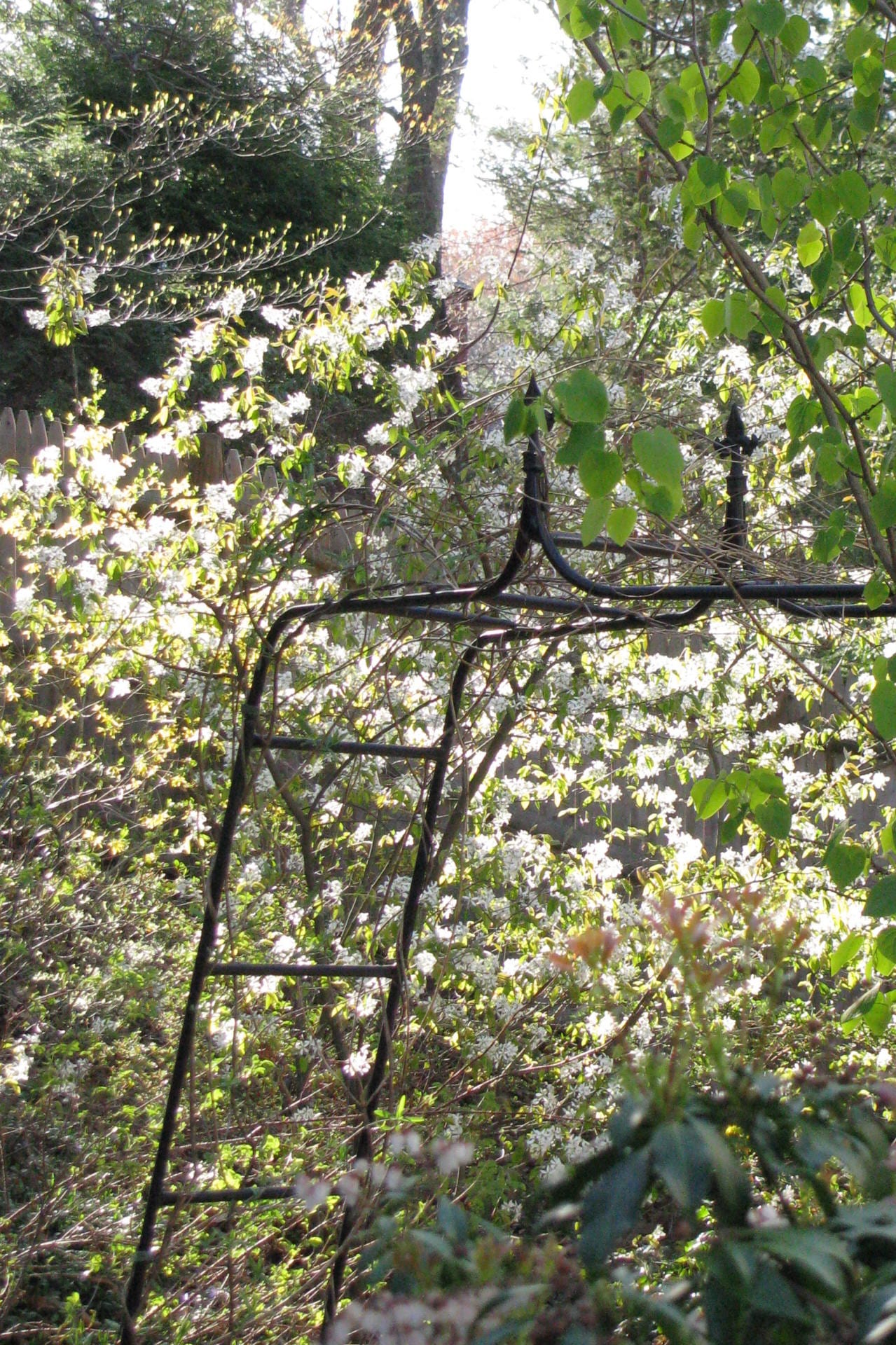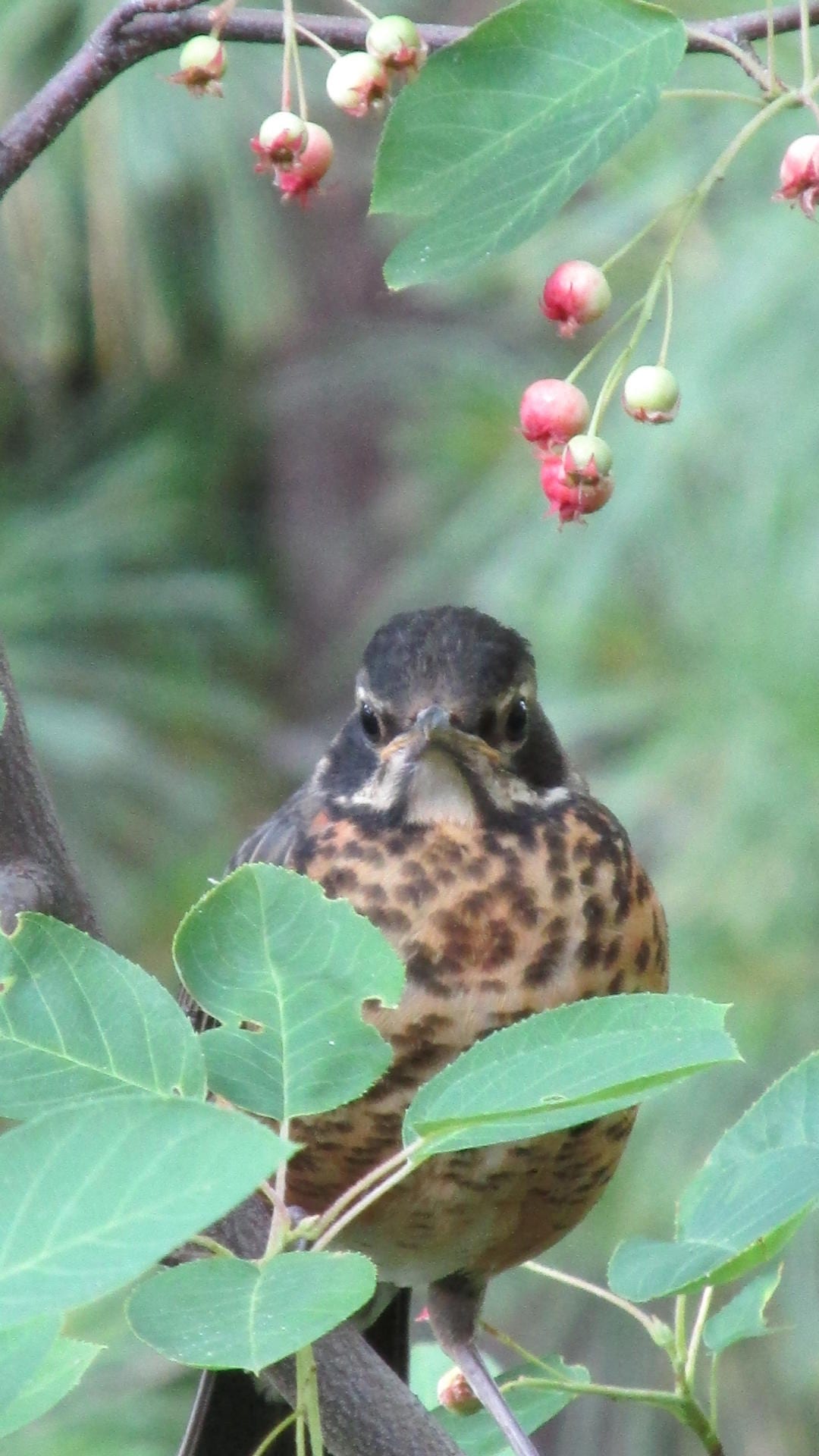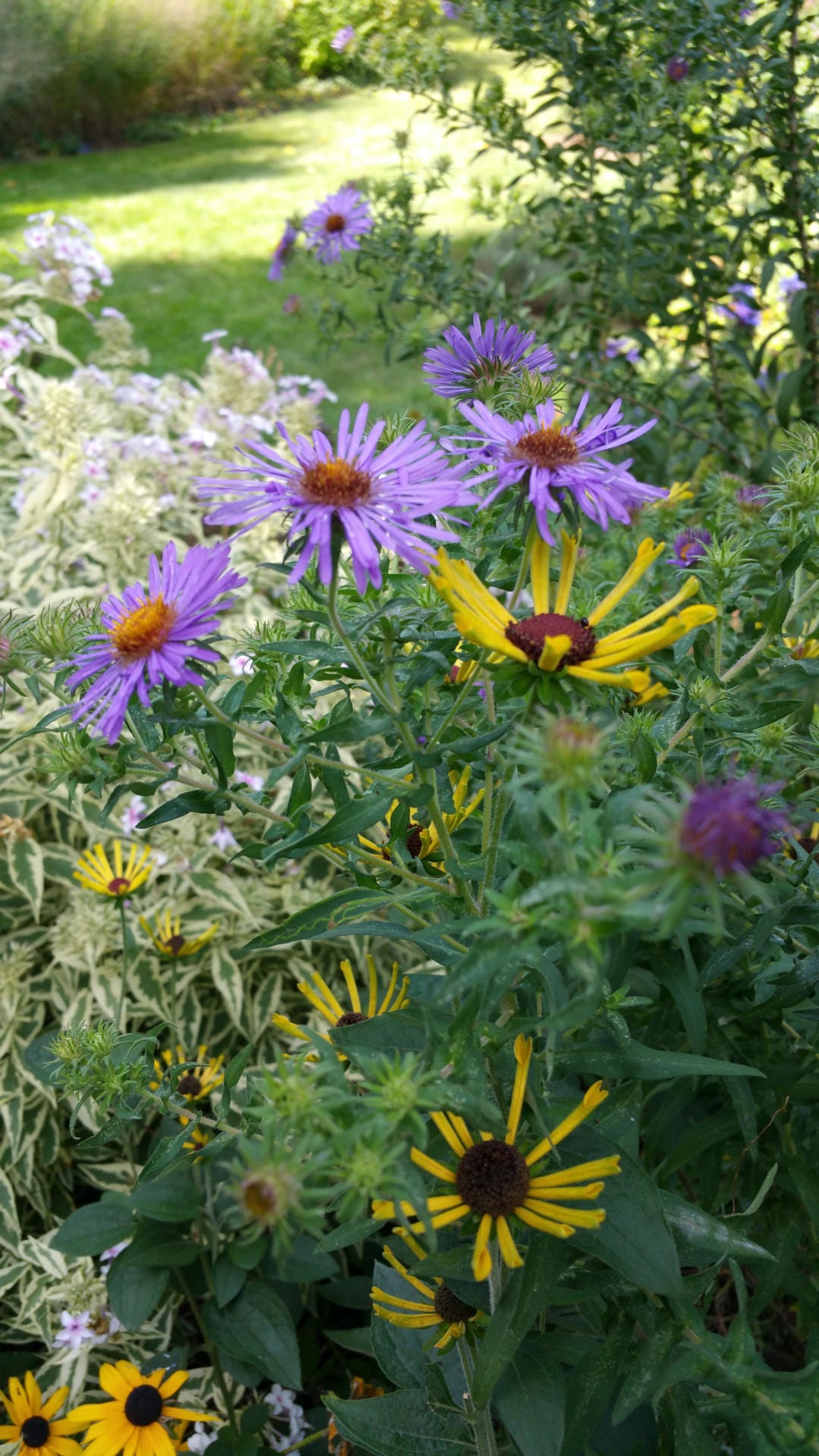by Maureen Sundberg
ELA’s Native Plant Tours are an enjoyable way to see native plants in all kinds of landscapes – urban to rural. Hosts generously share their gardens for a few hours, but they also share invaluable lessons they’ve learned about incorporating natives into their landscapes.
Joan and Phil Lounsbury, in Melrose, MA and Joanne Neale in Needham Heights, MA, former hosts on ELA’s Native Plant Tours, share how they became interested in native plants and their insights into use of native plants in home landscapes.
How and when did you learn about native plants and become interested in native plant gardening?

Joanne: With no serious disease or insect problems, Amelanchier lamarckii (serviceberry) is among my personal favorites. White flowers appear in early spring (April) before the leaves, giving way to edible berries that ripen in June (hence its other common name of Juneberry). This small multi-trunked tree’s leaves emerge bronze-purple in spring, mature to dark green in summer, and turn red-orange in fall.
Joan: Phil and I attended a lecture by Claudia Thompson of Grow Native MA at the Beebe Library in Wakefield. Her lecture was about growing native plants for wildlife of all kinds. Our reaction was “we can do this!” It was a simple way to “act locally” and make a significant impact.
Joanne: In 1986-87, I studied Plant Identification at Mass. Bay Community College with Horticulture Professor Gordon P. DeWolf, one of the authors of the Taylor’s Guide series and author of Native and Naturalized Trees of Massachusetts. I moved to my ¼-acre Needham property in 1990, where most of the backyard was heavily wooded and not landscaped. Numerous native plants grew under mature oak, pine, sassafras, and dogwood trees: mountain laurel, maple leaf viburnum, false Solomon’s seal and Canada mayflower. Among my first additions to this “woodland garden” were Amelanchier (serviceberry), Rhododendron maximum and R. catawbiense, and Hydrangea quercifolia (oakleaf hydrangea). The front yard featured two large oaks and a sugar maple, so I created another woodland garden with Halesia tetraptera (mountain silverbell) and other native and non-native plants. I also planted Fothergilla, Cornus sanguinea (red twig dogwood), and Ilex glabra (inkberry) in the foundation bed to replace non-native yews, azaleas, and hollies.

Joan: Our woodland garden is a peaceful place to rest in May. Plants include Geranium maculatum ‘Espresso,’ northern maidenhair fern (Adiantum pedatum), goldenseal (Hydrastis canadensis), crested iris (Iris cristata), ostrich fern (Matteuccia struthiopteris), twin leaf (Jeffersonia diphylla – which this year has self seeded for me!), Aquilegia canadensis ‘Little Lanterns’ and many others. All of these plants grow under the shade of a pagoda dogwood (Swida alternifolia), which attracts more pollinators and birds than any of the others. It’s our favorite small tree.
How has your use of native plants evolved in your gardens?
Joan: We started our new native garden with designer Darcy Paige of Laurel Gardens of Melrose, a friend and fellow gardener. She gave us the overall concept of a woodland and a prairie garden for very different parts of our yard, organizing what we already had into a cohesive whole. In older parts of the garden, we now replace ornamentals with natives as we have time, or as they die out.

Joanne: This young robin waits to devour the ripe berries of Amelanchier lamarckii (serviceberry). The edible berries resemble blueberries in size, color and taste. Serviceberry thrives in full sun to part shade and tolerates a wide range of soils.
Joanne: In 2000 I began to transition from practicing law to a new career as a garden designer, emphasizing low maintenance and environmental responsibility. To better advise my clients, I planted many more native and non-native plants in my own garden. As native plants such as Amelanchier, Clethra, Hydrangea quercifolia, Itea, and Fothergilla became popular and available at local nurseries, I utilized them in my designs and educated clients about their advantages. In my experience both as a gardener and as a designer, I find natives to be the ultimate low maintenance plants.
What resources have you found useful as you’ve developed landscapes with native plants?
Joan: Just being a member of Grow Native and being around similar minded people has made us better gardeners. We have been inspired by lectures at the Cambridge Public Library, sponsored by Grow Native, and sponsored by ELA on many native plant topics. I work at a library, so books and magazines are a top research material of course! I also use Go Botany (an online database developed by Native Plant Trust) and other websites.
Joanne: I deepened my knowledge in classes at the Massachusetts Horticultural Society, Arnold Arboretum, New England Wildflower Society (now the Native Plant Trust), and, more recently the Ecological Landscape Alliance and Grow Native Massachusetts. Another helpful resource has been the Underground, a Yahoo group of green industry professionals across the Northeast, devoted to advancement of knowledge, education, and skill in the art and science of landscape design, installation, and maintenance techniques.
What have been your best sources for buying native plants?

Joan: New England aster (Symphyotrichum novae-angliae) and Rudbeckia subtomentosa ‘Little Henry’ grow beautifully together. I saw the Rudbeckia growing at a wildlife sanctuary on Martha’s Vineyard and loved it, immediately bought it, packed it in the car, and brought it home on the ferry. The NE aster self seeded in, and wow, this combination was born.
Joan: I love to pre-order from the Grow Native plant sale! I also buy from Garden in the Woods and Nasami Farms. Since my specialty is to grow perennials from seed, I order from Toadshade Nursery in New Jersey and Wild Seed Project in Maine. If I need to cover a large area, I like to buy flats of natives from Northcreek and New Moon nurseries.
Joanne: Local retail nurseries I have used include Weston Nurseries, the native plant nursery at Garden in the Woods (Native Plant Trust) in Framingham, Stonegate Gardens in Lincoln, and Russell’s Garden Center in Wayland. (Several local nurseries that I relied upon have closed, most recently Windy Lo in Natick.) I also use local wholesale nurseries in my business as a garden designer. Van Berkum Nursery in New Hampshire (wholesale only) offers a line called “New England Woodlanders” of strictly propagated woodland plants native to the New England region. Retail mail order nurseries include Lazy SS Farm and Nursery in Virginia (sadly, recently closed), Fieldstone Gardens in Maine, Prairie Moon Nursery, Prairie Nursery, and High Country Gardens.
***
Each author appearing herein retains original copyright. Right to reproduce or disseminate all material herein, including to Columbia University Library’s CAUSEWAY Project, is otherwise reserved by ELA. Please contact ELA for permission to reprint.
Mention of products is not intended to constitute endorsement. Opinions expressed in this newsletter article do not necessarily represent those of ELA’s directors, staff, or members.

